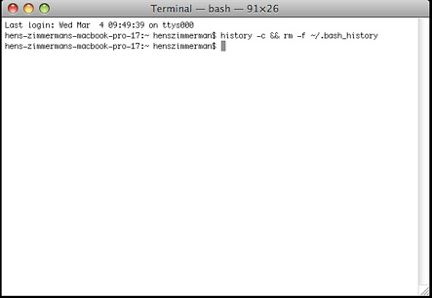

Caution: Before we proceed to looking at the various ways, note that because in Linux everything is a file, you must always make sure that the file(s) you are emptying are not important user or system files. Next, ‘rm’ command is used to remove the file. In the following script, an empty file is created by using the ‘touch’ command to test ‘rm‘ command. You can apply the ‘rm’ command to remove an existing file. Example-1: Delete the file using rm command without the option. How can this be achieved? In this article, we will go through several different ways of emptying file content with the help of some useful commands.The different uses of the rm command are shown below.
Linux : How to delete file securely Man pages scrub(1) the config is in.Important: For the purpose of this article, we’ve used file access.log in the following examples. Rm
# cp /dev/null access.logIn the following command, if means the input file and of refers to the output file. This is normally done by redirection mechanism.And the /dev/null device file is therefore a special file that writes-off (removes) any input sent to it or its output is same as that of an empty file.Additionally, you can empty contents of a file by redirecting output of /dev/null to it (file) as input using cat command: # cat /dev/null > access.logNext, we will use cp command to blank a file content as shown. Empty File Using cat/cp/dd utilities with /dev/nullIn Linux, the null device is basically utilized for discarding of unwanted output streams of a process, or else as a suitable empty file for input streams. Empty File Using ‘true’ Command RedirectionHere we will use a symbol : is a shell built-in command that is essence equivalent to the true command and it can be used as a no-op (no operation).Another method is to redirect the output of : or true built-in command to the file like so: # : > access.logEmpty Large File Using Linux Commands 3.
Empty File Using truncate CommandThe truncate command helps to shrink or extend the size of a file to a defined size.You can employ it with the -s option that specifies the file size. # echo -n "" > access.logEmpty File Using Null Redirect 5. A string is already an object much as it may be empty while null simply means non-existence of an object.For this reason, when you redirect the out of the echo command above into the file, and view the file contents using the cat command, is prints an empty line (empty string).To send a null output to the file, use the flag -n which tells echo to not output the trailing newline that leads to the empty line produced in the previous command. Empty File Using echo CommandHere, you can use an echo command with an empty string and redirect it to the file as follows: # echo "" > access.logNote: You should keep in mind that an empty string is not the same as null.


 0 kommentar(er)
0 kommentar(er)
